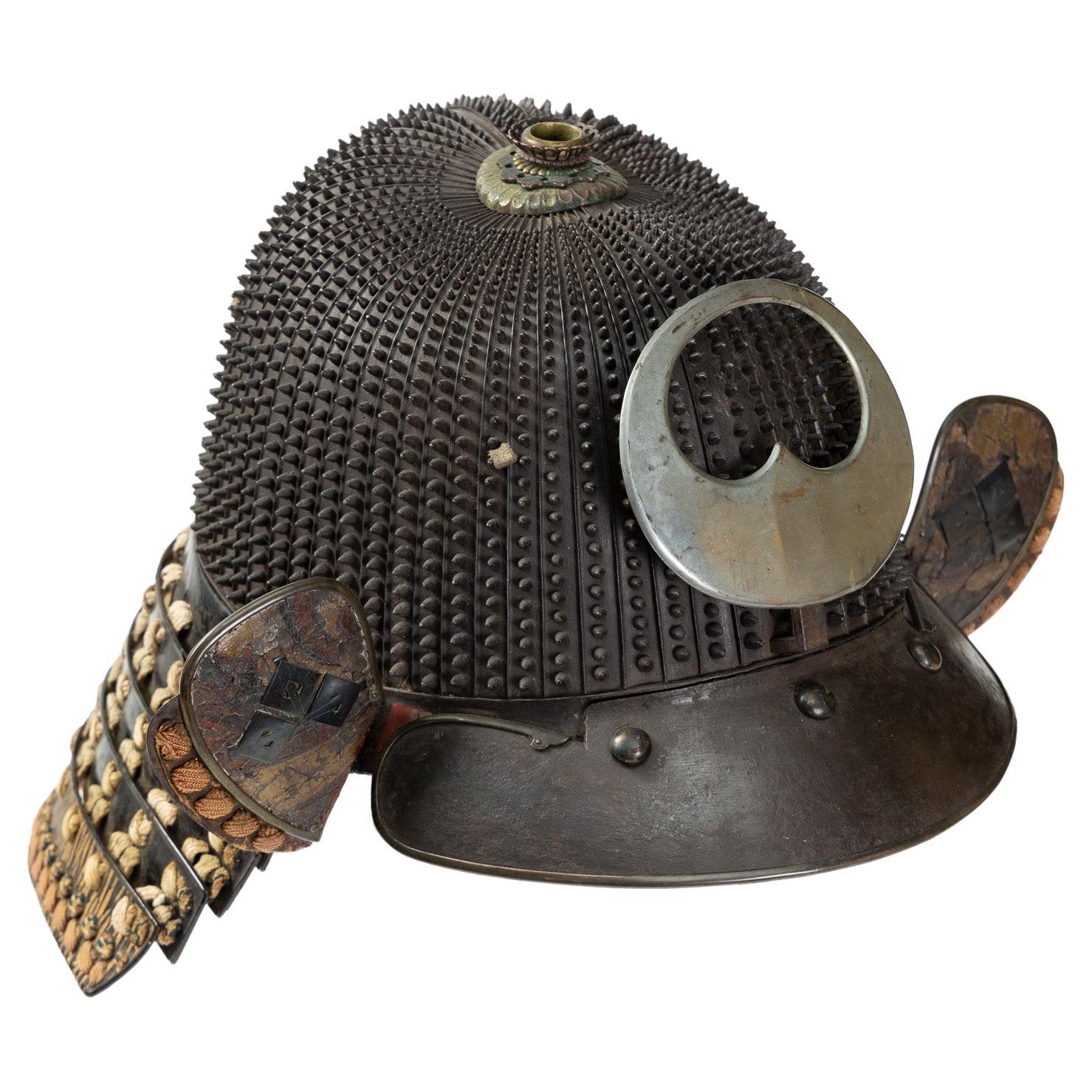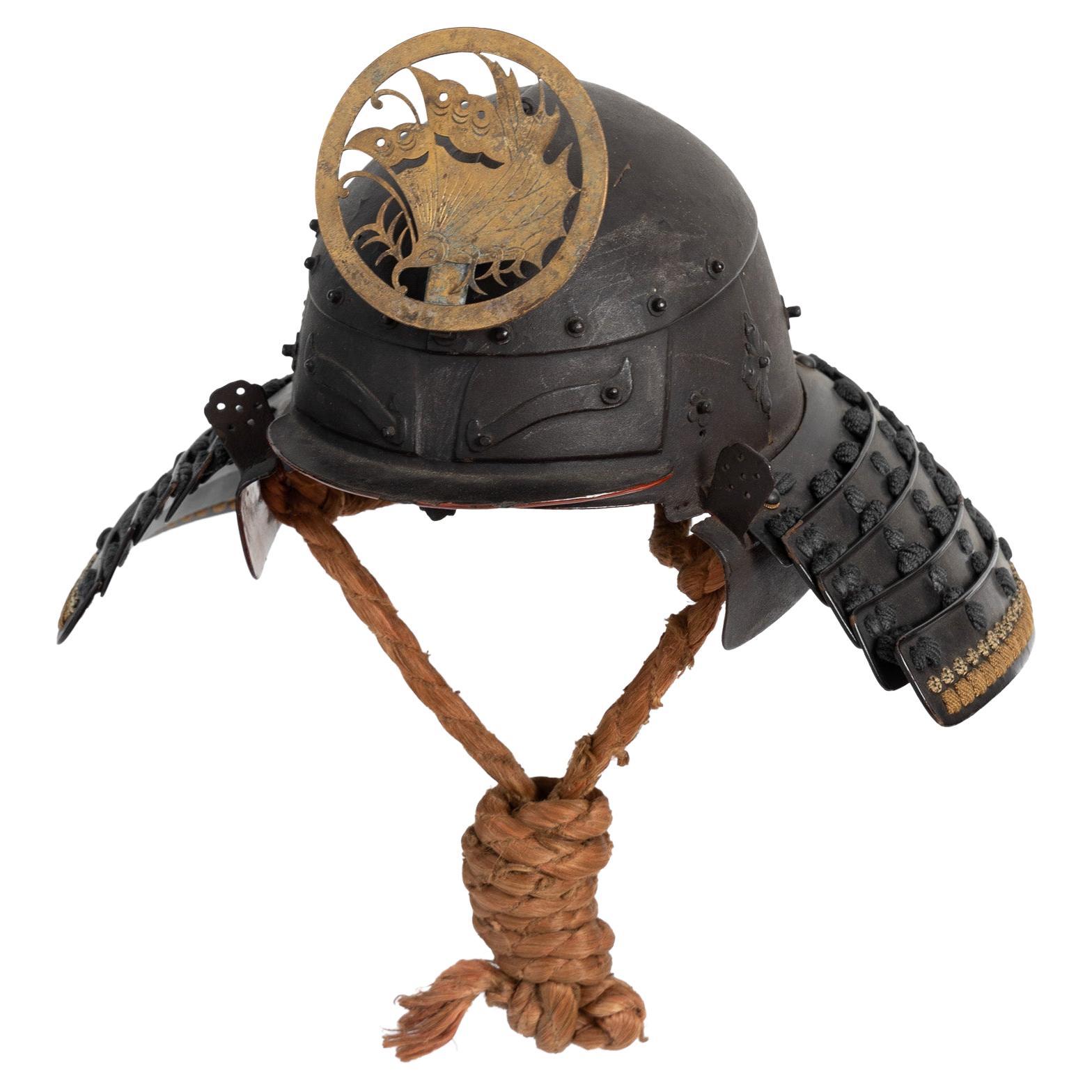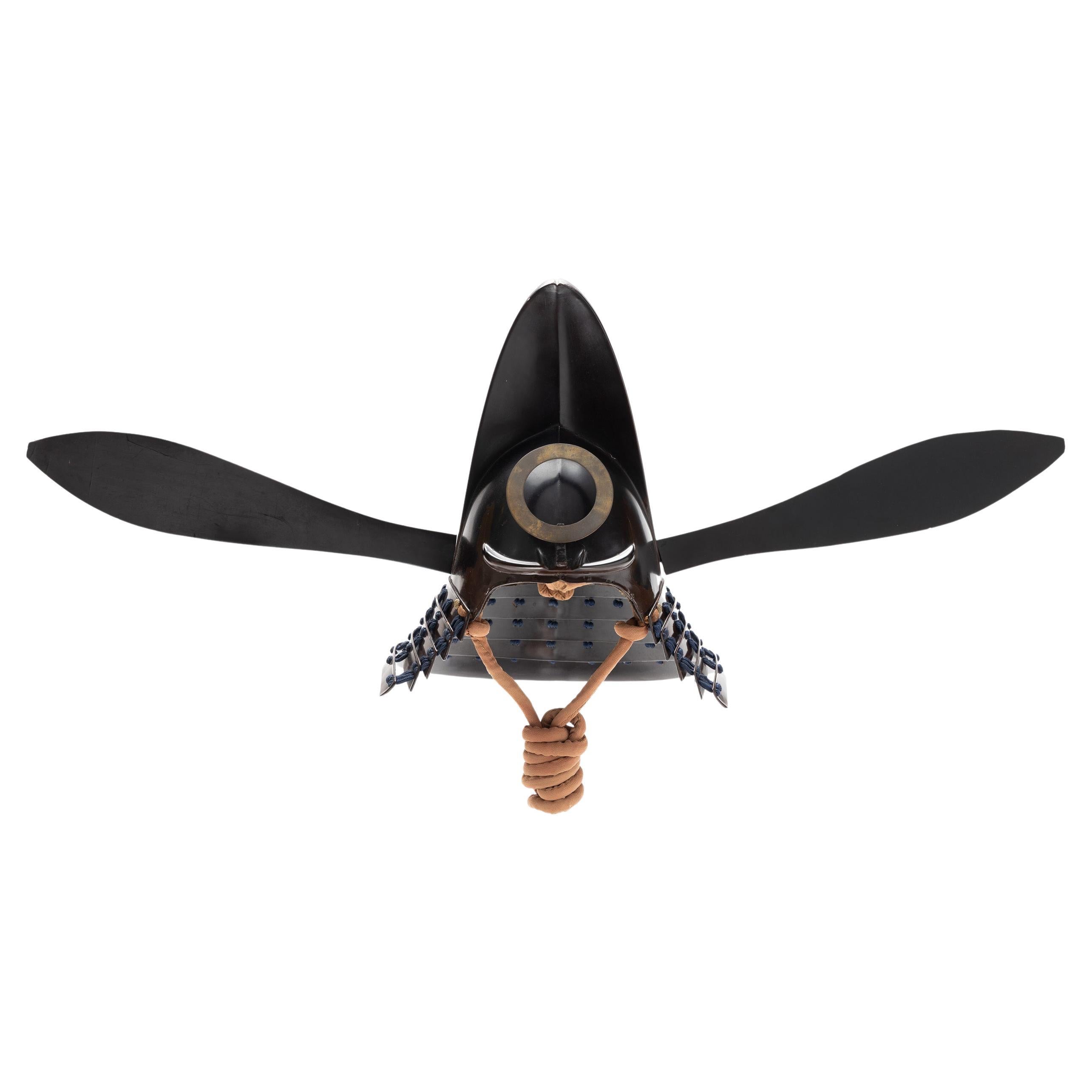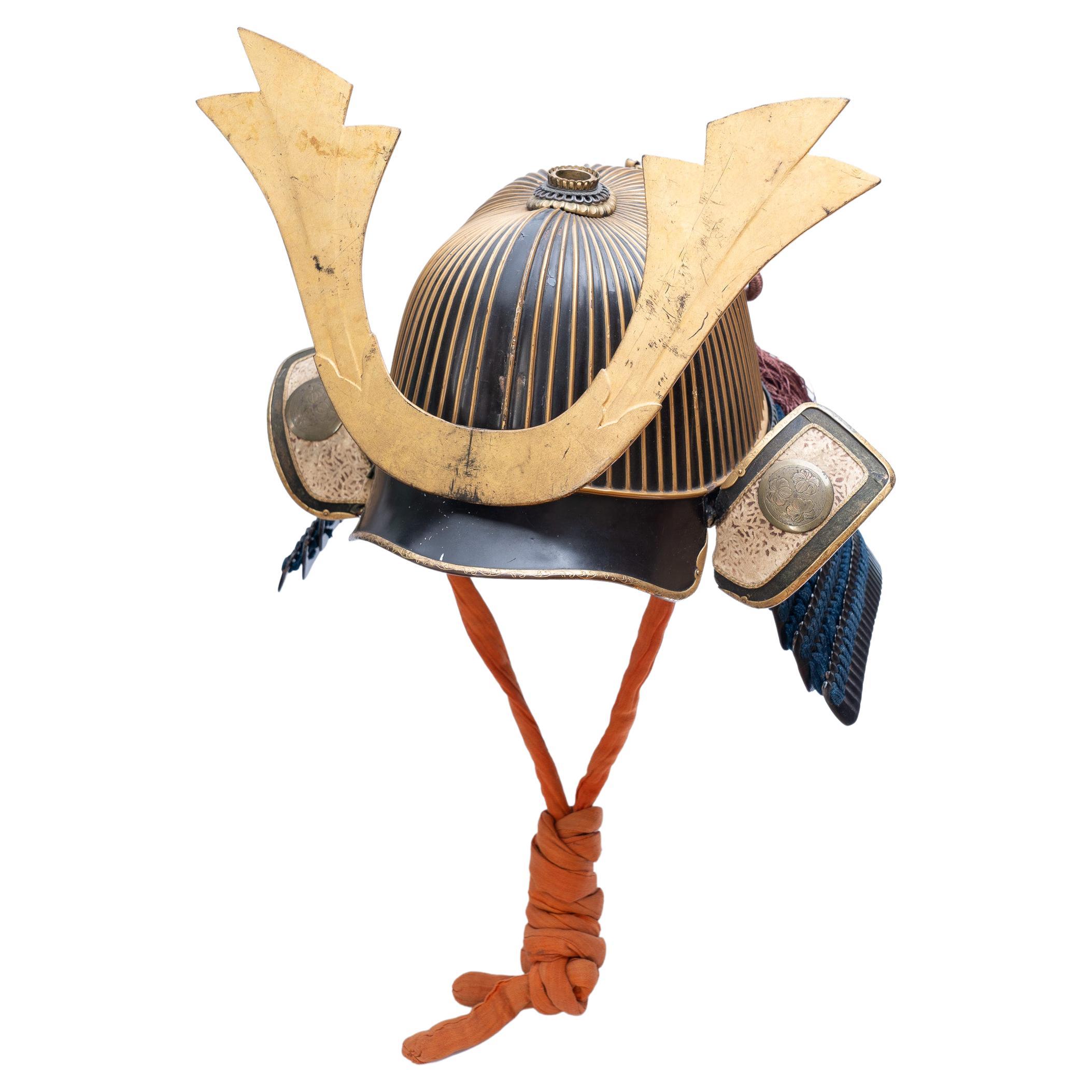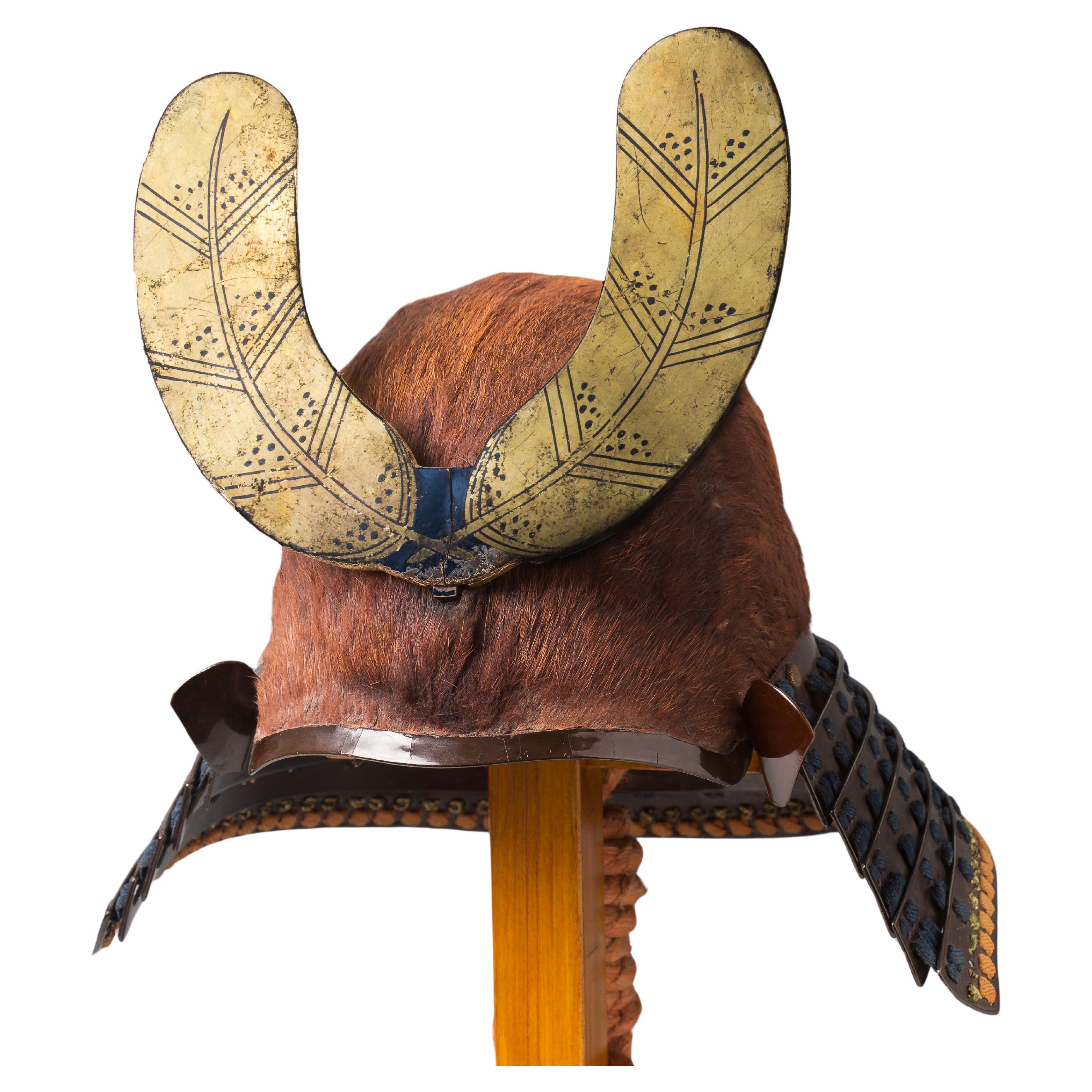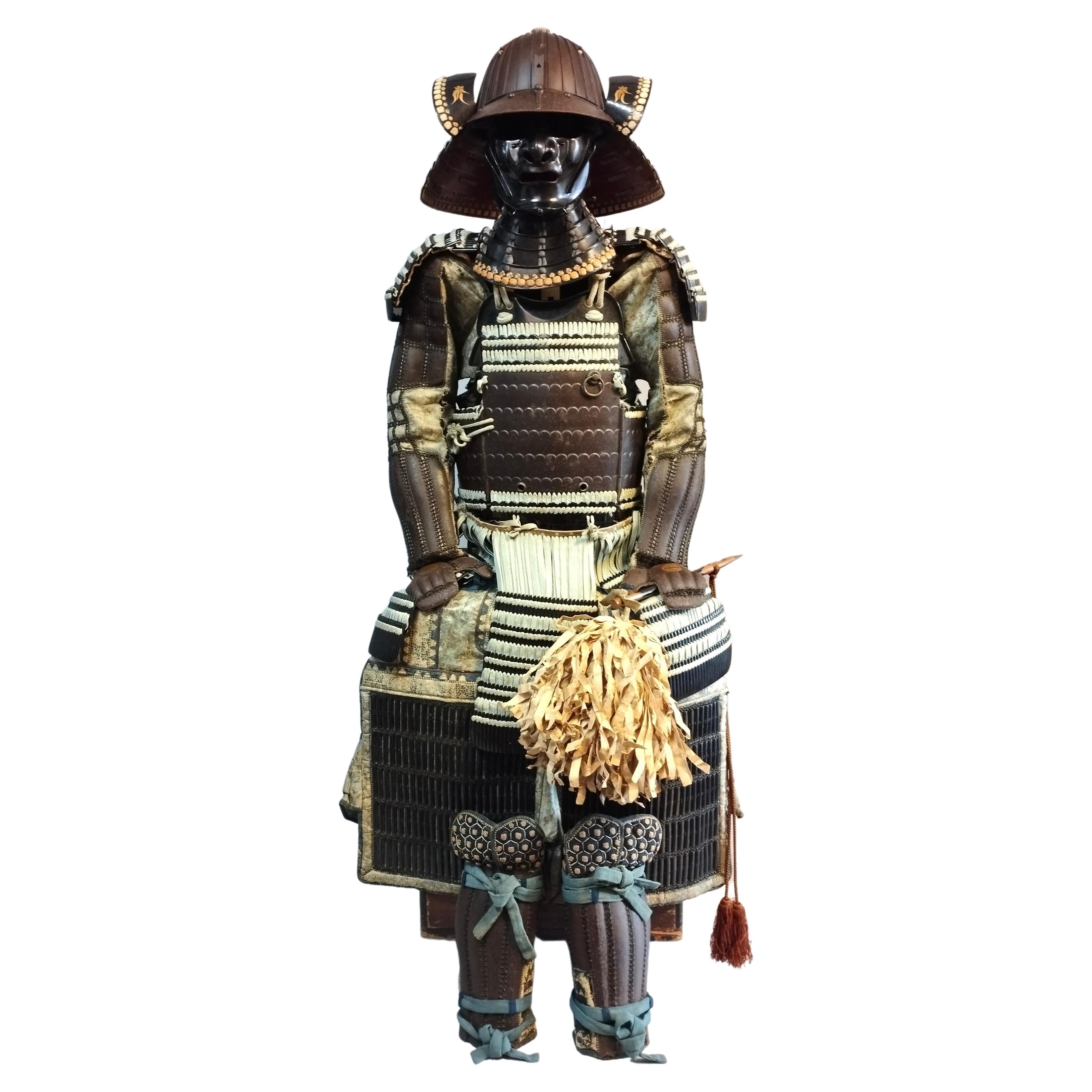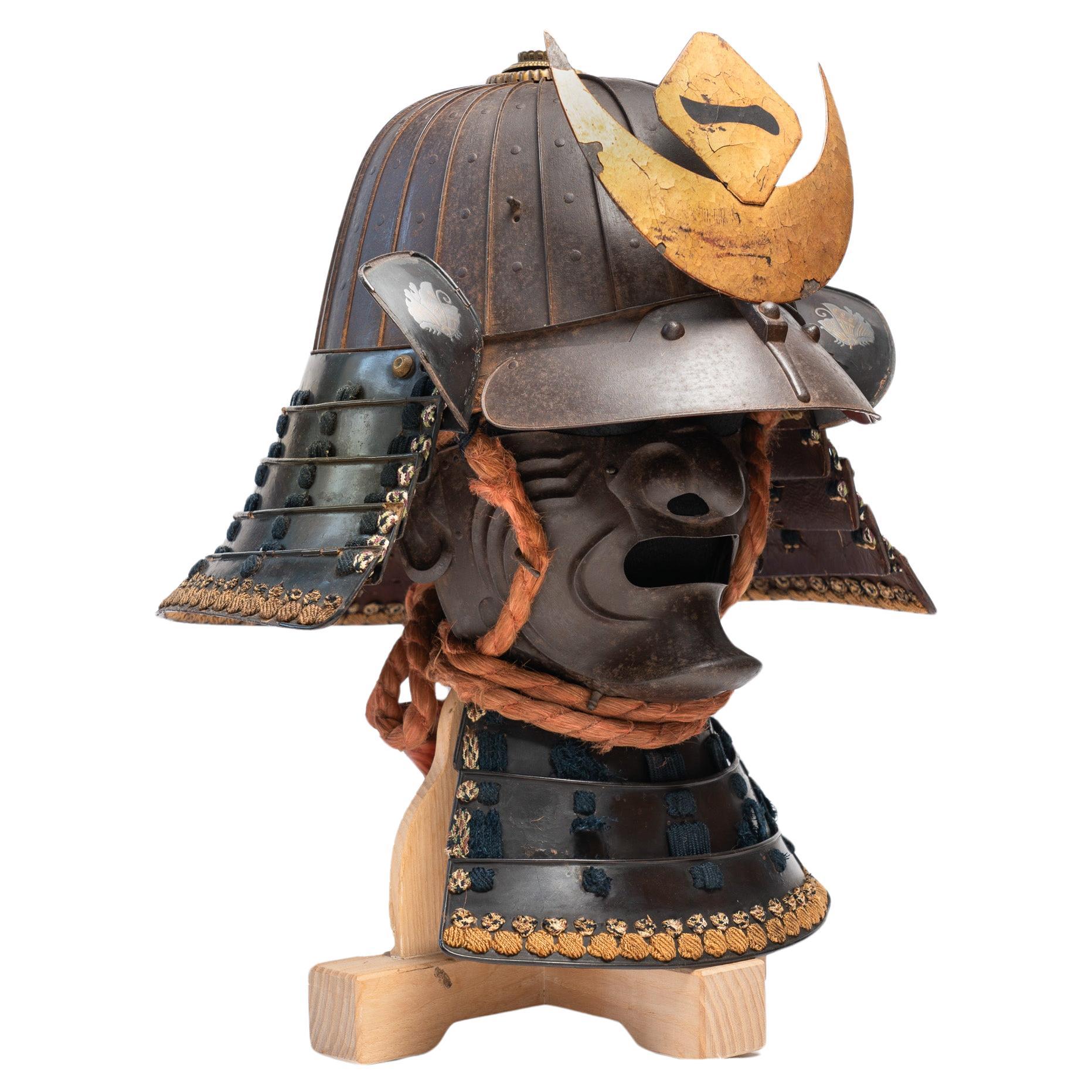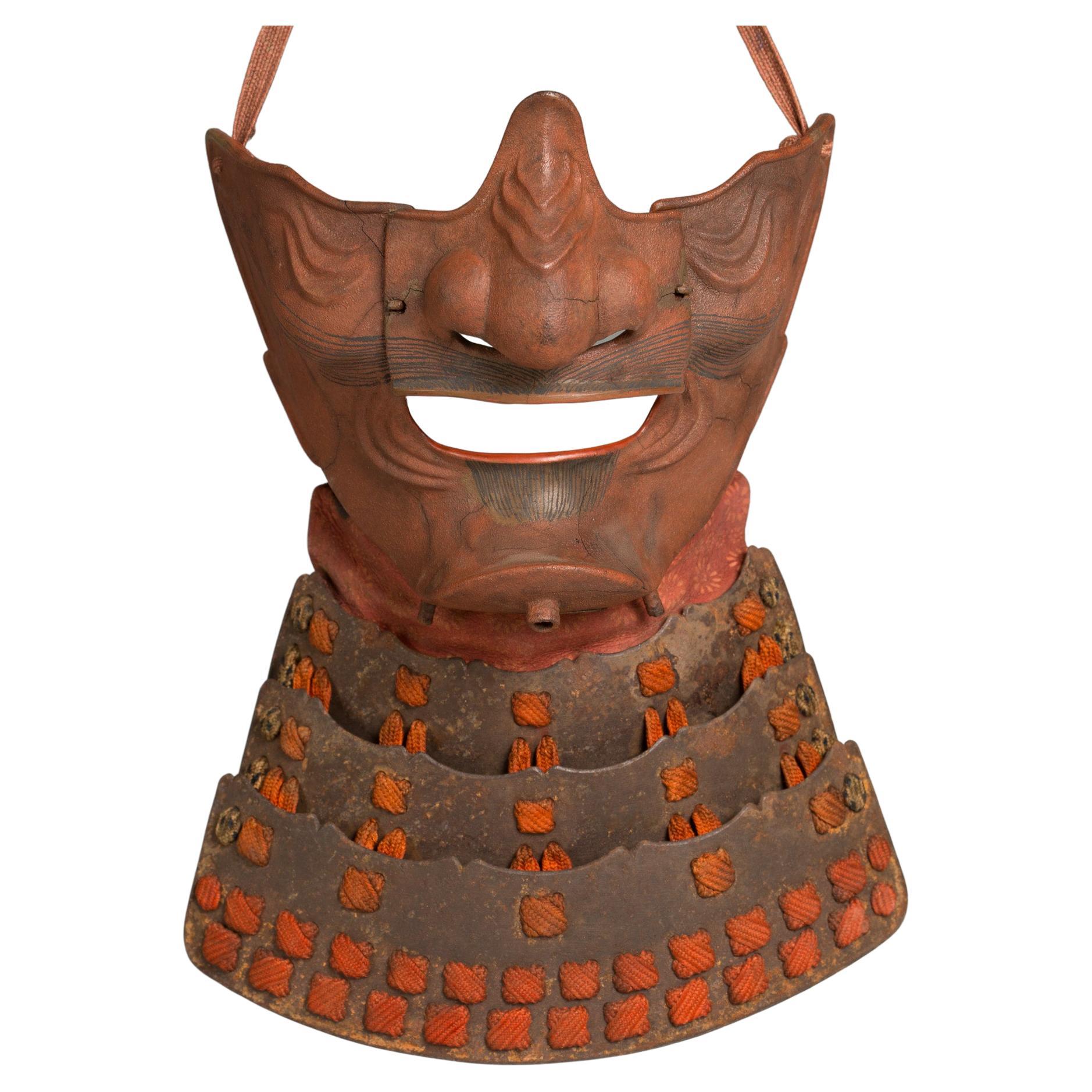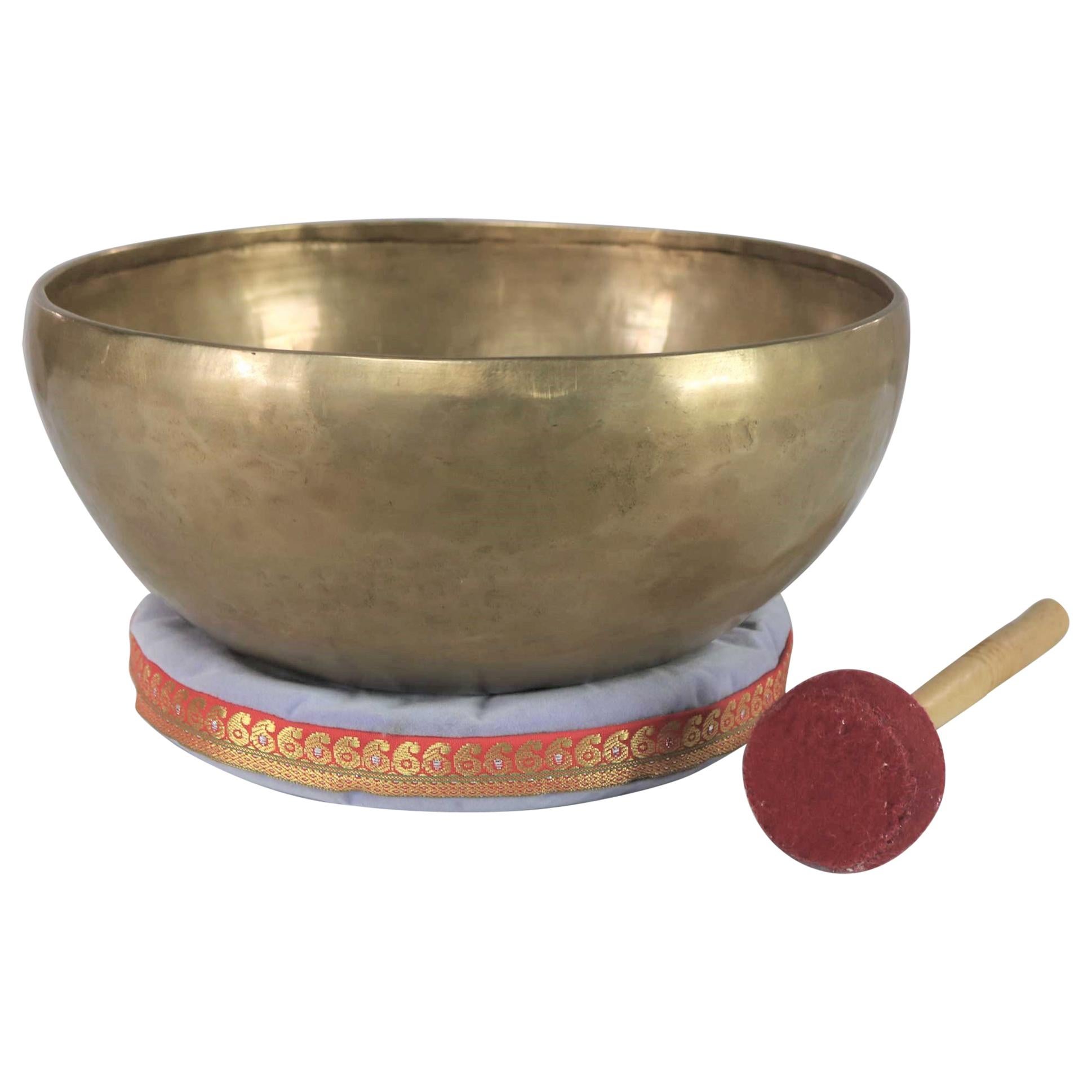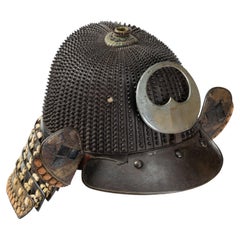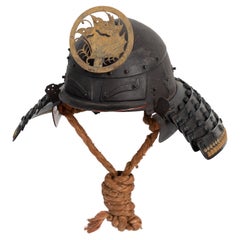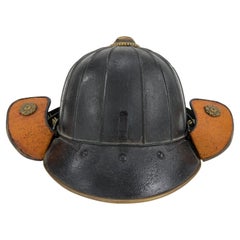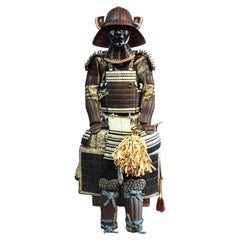
Koboshi Kabuto Signed Myochin Yoshiie Samurai Helmet with Small Standing Rivets
View Similar Items
Want more images or videos?
Request additional images or videos from the seller
1 of 13
Koboshi Kabuto Signed Myochin Yoshiie Samurai Helmet with Small Standing Rivets
About the Item
About the Seller
5.0
Recognized Seller
These prestigious sellers are industry leaders and represent the highest echelon for item quality and design.
Established in 2005
1stDibs seller since 2018
10 sales on 1stDibs
Typical response time: 2 hours
More From This SellerView All
- Koboshi Kabuto, Samurai Helmet with Standing Rivets Haruta SchoolLocated in Milano, ITKoboshi kabuto Samurai helmet with standing rivets Haruta School Early Edo Period, 17th century A 62-plate koboshi-bachi [helmet bowl with small s...Category
Antique 17th Century Japanese Arms, Armor and Weapons
MaterialsIron
- Okitenugui Kabuto Samurai Helmet Shaped as a Head Towel Saika, Early Edo PeriodLocated in Milano, ITOkitenugui kabuto Samurai helmet shaped as a head towel Saika, early Edo period, 17th century The Haruta armorers who moved to Kii province in the early 17th century, took the name from the village where they worked, Saika, near Wakayama, possibly on request of the local daimyo, Asano Yukinaga, a great armour amateur. Specialised in the construction of plate helmets, they produced mainly two typologies of kabuto: one with six plates covered with a chrysanthemum-shaped plate on top and one shaped as a “head towel”, called okitenugui. The latter type of kabuto employs very heavy plates crafted in a curved manner and was improved in order to make it resistant to firearms. This okitenugui kabuto features some distinctive decorations of the Haruta school, including the application of cut-out iron elements, including eyebrows, washers and lozenge-shaped decorations on the sides. The ring on the top, however, is a rare feature and could be used to hold a small war flag.Category
Antique 17th Century Metalwork
MaterialsIron
- Tōkanmuri Kabuto Samurai Helmet in the Shape of a Court CAPLocated in Milano, ITTokanmuri kabuto Samurai helmet in the shape of a court cap Momoyama to early Edo Period 17th century The wearing of helmets that reproduced the shapes of traditional ...Category
Antique 17th Century Japanese Metalwork
MaterialsIron
- Sujibachi kabuto 62-plate samurai helmet Haruta school, Edo periodLocated in Milano, ITSujibachi kabuto 62-plate samurai helmet Haruta school, Edo period 17th-18th century A lamellar helmet consisting of sixty-two plates joined with five rows of rivets. The surface is...Category
Antique Mid-17th Century Japanese Metalwork
MaterialsIron
- Sogonari Kabuto Samurai Helmet Shaped as a Human Head Early Edo PeriodLocated in Milano, ITSogonari Kabuto Samurai Helmet shaped as a Human Head Early Edo Period (1615 - 1867). Three-plates kawari kabuto covered with tawny hair to ...Category
Antique Early 1700s Metalwork
MaterialsFur
- Suji-bachi kabuto and menpo Signed by Myōchin Muneaki and dated 1853Located in Milano, ITSuji-bachi kabuto and menpo Signed by Myōchin Muneaki and dated 1853 Signature: Kaei 6 - Ushidoshi Oshu Nihonmatsu-ju Myōchin Ki (no) Muneaki saku Made in 1853 by Myōchin Ki Muneak...Category
Antique 18th Century and Earlier Metalwork
MaterialsIron
You May Also Like
- Japanese Samurai Helmet Kabuto Edo Period (1603-1867)Located in Hampstead, QCA Japanese Samurai black-lacquered helmet (kabuto) in suji bachi style and of a goshozan shape consisting of the: - main dome (hachi) made from 16 plates in natural iron riveted to...Category
Antique Early 19th Century Japanese Edo Metalwork
MaterialsIron
- 18th Century Hirate Clan Samurai Armor with Signed Kabuto HelmetLocated in Fukuoka, JPThis is a truly exceptional set of 18th century Samurai armor that is sure to impress any collector or enthusiast. The patinated iron used in its construction has aged beautifully, giving the armor a truly unique appearance that is sure to catch the eye. The brocade silk and cotton padding used to line the armor not only provide a comfortable fit for the wearer, but also add an extra layer of decorative flair. One of the most striking features of this armor is the crests of the Hirate samurai clan that adorn it. These crests are a symbol of the clan's identity and heritage, and their presence on the armor speaks to the deep connection between samurai warriors and the clans they belonged to. The Kabuto...Category
Antique 18th Century Japanese Antiquities
MaterialsIron
- Antique circa 1920 Chinese Export Floor Standing Bell with Wrought Iron StandLocated in GBWe are delighted to offer for sale this exquisite circa 1920 Chinese Export floor standing bell on wrought iron stand A very well made and decorative...Category
Vintage 1920s Chinese Chinese Export Metalwork
MaterialsBrass, Wrought Iron
- Vintage Bronze Handmade Singing Bowl or Standing Bowl with Mallet on PillowLocated in Topeka, KSBeautiful singing bowl or standing bowl with a mallet and its playing pillow. Handmade of bronze or bell metal and showing the makers hand. It is in wonderful vintage condition with ...Category
20th Century Chinese Export Metalwork
MaterialsBronze
- Samurai Helmet "Zunari Kabuto" - Early Edo (circa 1610)Located in Paris, FRSamurai Helmet "Zunari kabuto" with 3 black lacquered iron plates. Japan, early EDO period, circa 1610. Neck protector (shikoro), 5-strip hineno, laced brown, beige and green. Centra...Category
Antique Early 17th Century Japanese Edo Antiquities
MaterialsIron
- Myochin Style Hiroyoshi Japanese Edo Articulated Metal Rock LobsterBy Myochin HiroyoshiLocated in New York, NYJapanese Edo period articulated rock lobster made of copper, bronze and iron and signed 'Hiroyoshi' on the bottom. Made in the early 20th century (late Meiji/early Taisho period), the piece has articulated limbs, antennae, body and tail. A superb example of the Myochin style. The Myochins were a distinguished family of samurai armorers. As military conflict in Japan abated in the early 17th century and samurai warriors became courtiers, bureaucrats and administrators, the armorers were compelled to adapt their skills by making articulated sculptures...Category
Early 20th Century Japanese Meiji Metalwork
MaterialsBronze, Copper, Iron
Recently Viewed
View AllMore Ways To Browse
Used Leather Helmets
Edo Samurai
Samurai Armour
Samurai Armor
Leather Helmets
Japanese Samurai Armor
Antique Samurai Armour
Antique Samurai Armor
Japanese Samurai Armour
Antique Leather Helmet
Edo Period Bowl
Japanese Helmet
Japanese Edo Armor
Japan Iron Bowl
Japanese Iron Bowl
Antique Japanese Helmet
Edo Period Japanese Armor
Japanese Samurai Helmet
